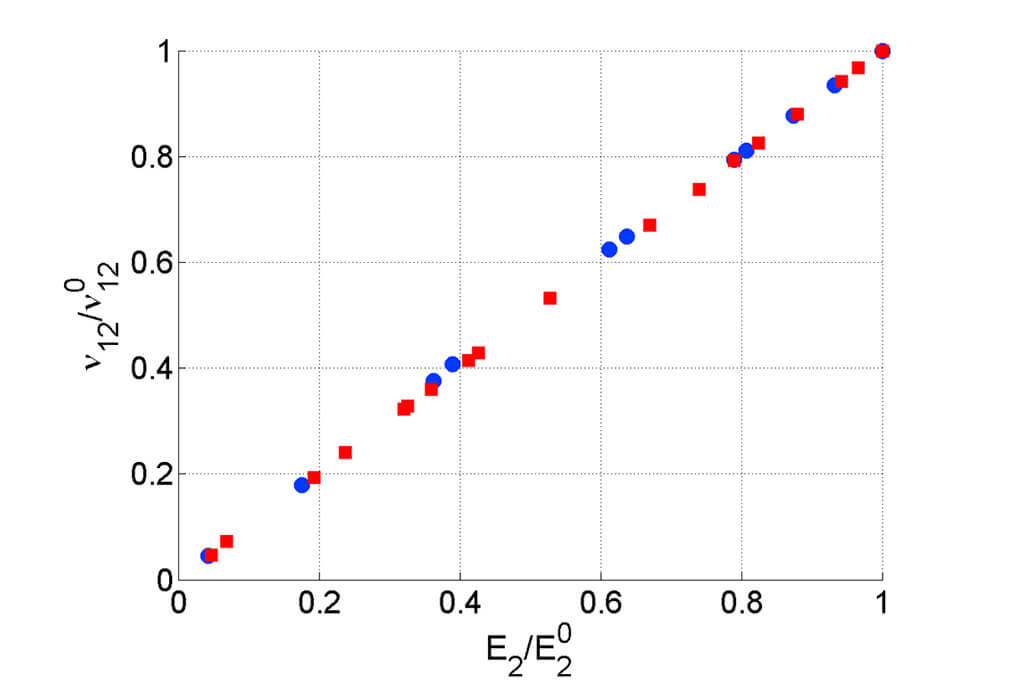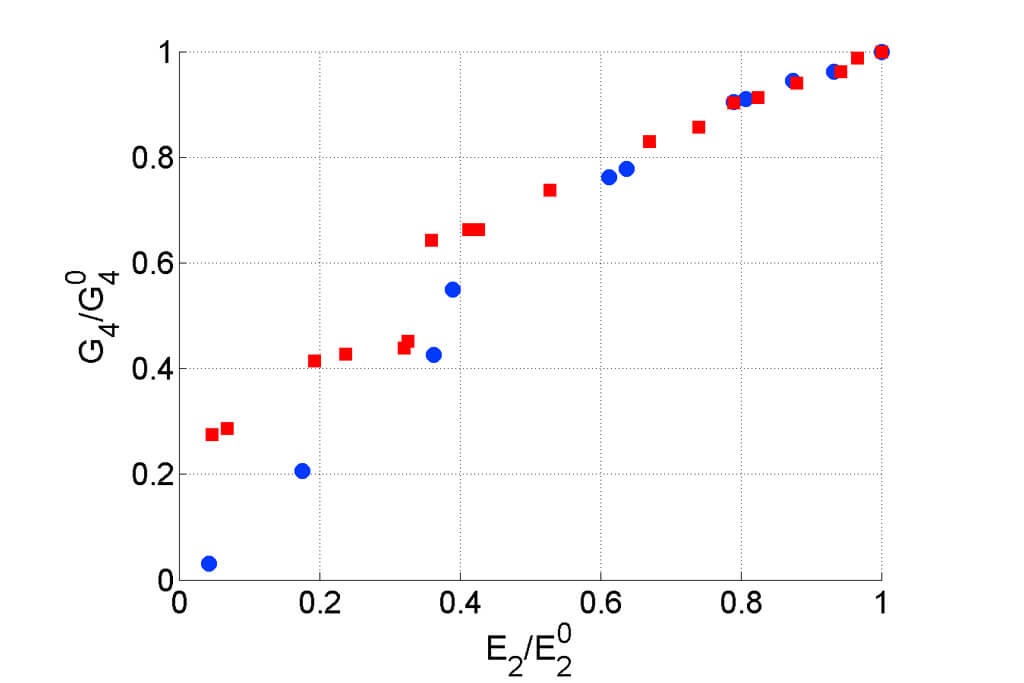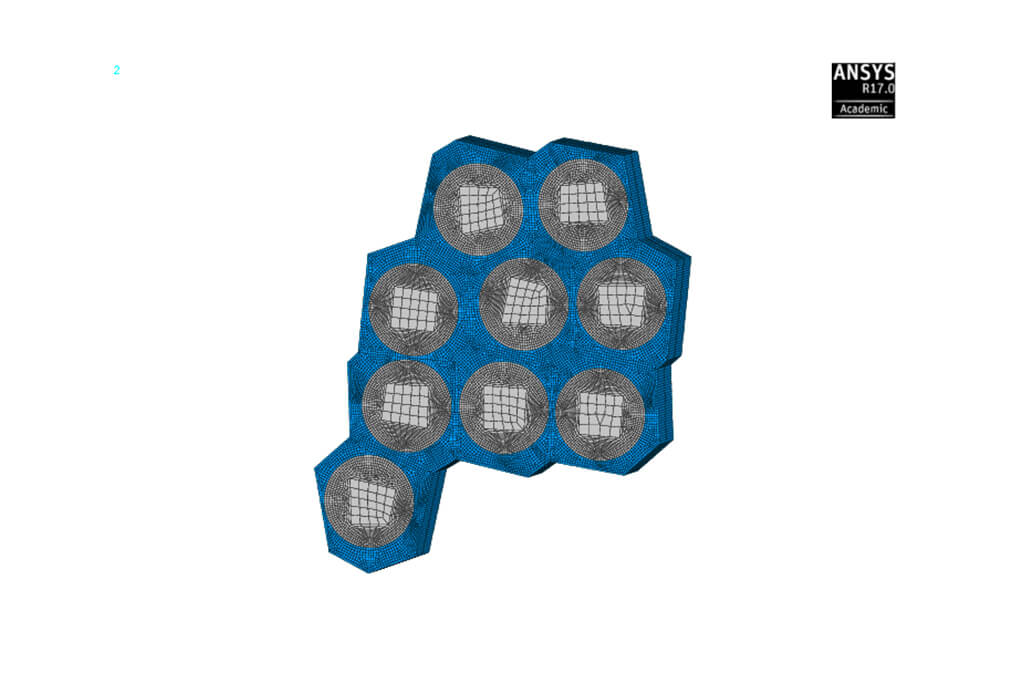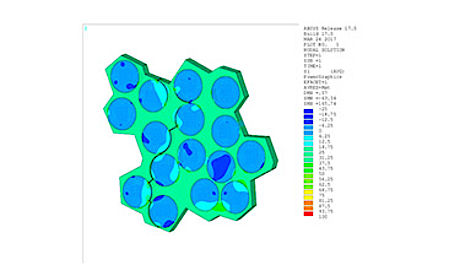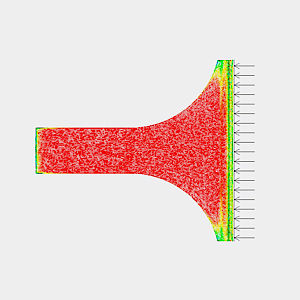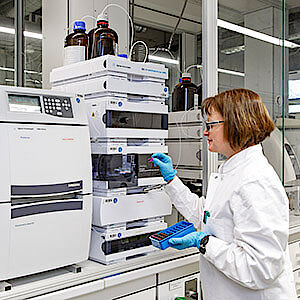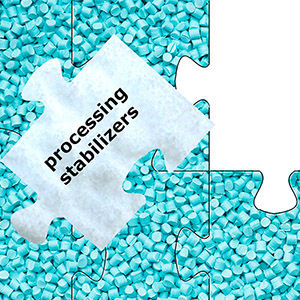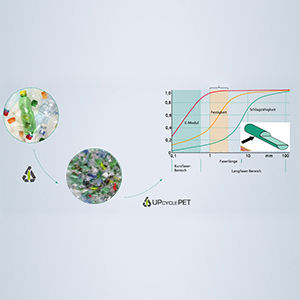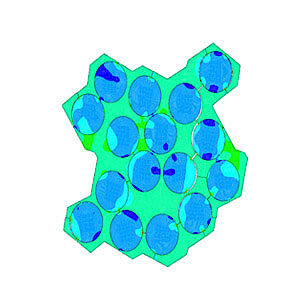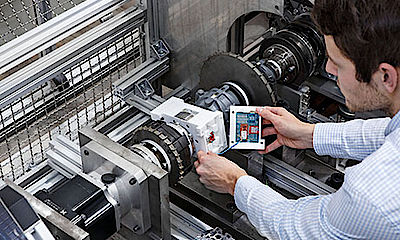Numerical lifecycle simulation for composites.
FATIGUE. DEGRADATION LIFECYCLE, FIBER PLASTIC COMPOSITE, FIBER COMPOSITE
![[Translate to Englisch:] Anordnung mit 16 Fasern und Rissen](/fileadmin/user_upload/2018/Polymertechnik/Numerische_Lebensdauersimulation_fuer_Composites/Aufmacher_2x16FasernRisse_1200x525_tiny_.jpg)
Fatigue of components made of continuous fiber reinforced plastics involves a variety of different damage mechanisms. Different types of cracks lead to changes in the local material and component stiffness, which also constantly changes the load distribution in the component over the duration of load-bearing. Current work at Fraunhofer LBF considers the effect of microscopic cracks on the effective stiffness of the composite material in order to take better account of these redistributions in the development of new component design methods.
Considering the change in the stiffness distribution is an important prerequisite for the realistic computational estimation of the fatigue behavior and thus for an efficient component development. Micro-cracks and inter-fiber fractures often occur after just a few load-bearing cycles. Neglecting their effect on local material stiffness would therefore mean assuming unrealistic distributions of stresses for the majority of the service life. The progress of damage could only be calculated inaccurately in this way. The goal is therefore to further improve existing approaches to modeling of the damage-induced stiffness change in order to increase the model quality of computational methods for estimating the service life and the fatigue behavior. It should be noted that local stress and damage development depend heavily on the irregular distribution of the reinforcing fibers within the plastic matrix.
Improved computational estimation of the reliability of multidirectional laminates under operating loads
Currently, studies at Fraunhofer LBF focus on random periodic fiber arrangements in the surrounding matrix. After generating the arrays using a Monte Carlo method, the material area under consideration is transformed into a finite element model so that its stress-/strain-distribution can be calculated using periodic boundary conditions. A specially developed micromechanical lifetime model then enables the simulation of damage processes under cyclic loading.
By evaluating special load scenarios in the FE simulation, the effective stiffness properties can be determined for each state. Even a few small cracks can lead to a noticeable change in the elastic moduli or the transverse contraction behavior. When many random fiber arrays are generated, the method allows statistical analysis of the material properties. For example, the damage behavior depends on the size of the material area under observation. The statistical distribution functions of the properties can be described and the correlations of the elastic properties amongst each other can be investigated in the course of the damage process. This is of interest for fatigue experiments, in which only a part of the material properties can usually be measured directly.
The developed methodology helps us better understand the essential relationships between damage and material properties during the fatigue of fiber-plastic composites and to describe them with a minimum of material parameters. It thus creates important foundations for the development of improved simulation methods with feasible experimental effort and thus for the confident estimation of the reliability of lightweight components even in early development phases.
Damage in two different arrays of 16 fibers each.
The lifetime model formulated for the micro-scale makes it possible to reproducibly generate damage states depending on the applied macro-strain. Thermal residual stresses as well as the microscopic redistribution of the stress, caused by each individual micro-crack, are taken into account.
References
D. Laveuve und A. Büter: Numerical investigation of elastic property degradation in unidirectional plies under transverse fatigue load, ICFC7 – the 7th International Conference on Fatigue of Composites, Vicenza, Italy, 4-6 July 2018.

“Simulations on the micro-scale reveal correlations between material structure and damage behavior. In the development of macroscopic calculation methods for the development of components, the relationships that are relevant for the fatigue behavior can then be specifically considered. The motto is: As simple as possible but as accurate as necessary!” Dominik Laveuve
Contact
- Dipl.-Ing. Dominik Laveuve
- Phone: +49 6151 705-492
- dominik.laveuve@lbf.fraunhofer.de
